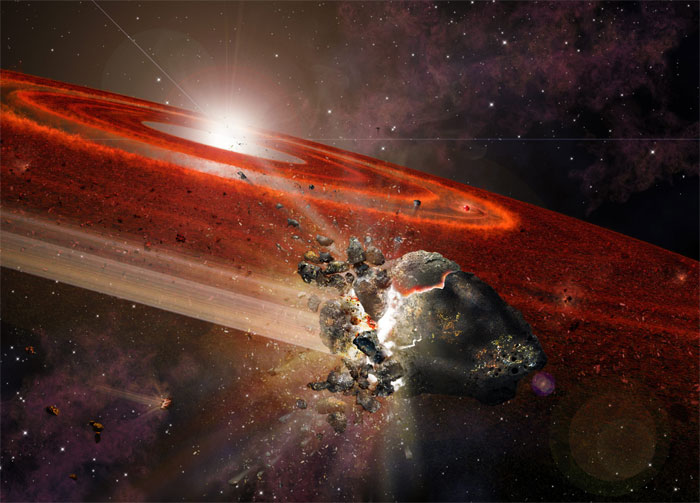The punctured area, shaped like a ring, is believed to have appeared around 4.567 billion years ago, during the early formation of Earth and most of the planets from the protoplanetary disk of the young Solar System.
This discovery comes from a study led by Professor Benjamin Weiss from the Department of Earth, Atmospheric, and Planetary Sciences at the Massachusetts Institute of Technology (MIT).

The early Solar System with a ring-shaped void dividing the inner and outer worlds – (Photo: A. Angelich / NRAO / AUI / NSF).
According to MIT News, the mysterious void in the shape of a ring separated the young Solar System into two distinct regions with very different characteristics, directly influencing the formation of planets later on. This hollow ring is located between the orbits of Mars and Jupiter today, where the Asteroid Belt now resides.
This finding comes from a decade of research on meteorites. There is a strange division in composition: despite originating from the Solar System, they seem to come from two different worlds.
One group, referred to as “carbonaceous meteorites”, originates from the outer regions of the Sun, while another group consists of “carbonaceous meteorites” from the area closer to the Sun. Naturally, carbonaceous meteorites should have weaker magnetic fields than the other group, as the magnetism of space rocks degrades with distance from their parent star. However, MIT scientists discovered the opposite.
According to Sci-News, there is only one possible explanation: something is blocking the path between the world of non-carbonaceous meteorites and carbonaceous meteorites. In a young star system, this “Great Wall” is a void in the protoplanetary disk.
The cause of this void is thought to be the “mischief” of the young Jupiter, the first planet in the Solar System, which has a magnetic field strong enough to disrupt the protoplanetary disk—a region that was originally a dense, cohesive cloud of gas and dust surrounding the young Sun.
This “world-dividing void” significantly affects the composition of the planets, evidenced by the inner rocky planet group—including Earth—having many characteristics that are very different from the “gas giants” that dominate the outer Solar System.
The research has just been published in the scientific journal Science Advances.


















































